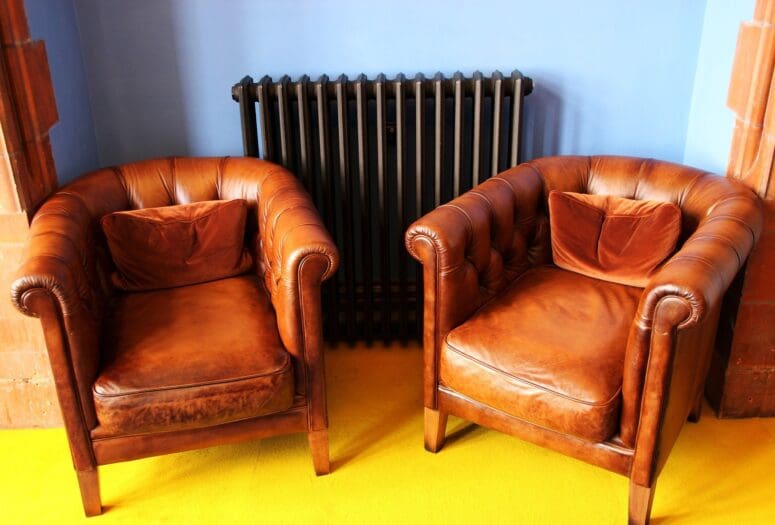What’s the Best Way to Downsize Your Home? Choose the Right Route to Save on Hassles, Time, Or Money
- Published on
- 5-6 min read
-
 Elizabeth Pandolfi Contributing AuthorClose
Elizabeth Pandolfi Contributing AuthorClose Elizabeth Pandolfi Contributing Author
Elizabeth Pandolfi Contributing AuthorElizabeth Pandolfi is an award-winning writer and editor with expertise in real estate coverage, including New Urban and planned communities.
Getting ready to move from that big house in the suburbs to something smaller and more manageable? You’re not alone.
According to MarketWatch, data shows that more Americans want to downsize—37%—than upsize, or move to a bigger home. It’s time to reduce housing costs and ditch the constant maintenance demands of a large property, once and for all!
But there’s a catch: When you downsize, you lose that extra bedroom closet or storage space, so you simply can’t take everything with you. The biggest challenge is paring down the possessions you’ve accumulated in a larger home to accommodate your new smaller residence. How can you get from point A to B?
You’ve got a few options depending on your priorities, whether it’s making the process as smooth as possible, moving in a tight timeframe, or saving money to preserve your budget. We’ve laid out each route here, taking those variables into account so you can execute the best way to downsize your home for your individual situation.

Priority #1: Downsizing is a huge life decision, and you want to give each piece of the project the attention it deserves.
If you’ve got plenty of time to work on downsizing—i.e., you’re not planning on putting your house on the market for several months to a year—then the best way to downsize is to do so in small, manageable chunks.
Here’s how to get started.
Take an inventory
When you’ve got time on your side, the very first thing to do is inventory what you have.
Why? Because when you know exactly what you have, it’s much easier to see what you can do without.
Start with a single room or storage space. There are a few ways to go about this. One is to create a full inventory of that space, using a template like this one from United Policyholders.
These templates are designed to help you after an insurance claim, so they are truly exhaustive. Plus, they offer the added benefit of giving you a full home inventory that can be used to help you decide how much homeowners’ insurance you need, as well as assist in making an insurance claim after a loss.
Once you’ve completed inventory for the room you’re working on, start crossing off the items you’re ready to part with.
If you prefer entering things on your phone or computer, try an app like Sortly, which has been named the top home inventory app overall by The Balance, or Nest Egg, which was named one of the best home inventory apps by Insuramatch. These allow you to create and organize lists of your belongings, as well as take pictures and add notes for each entry.
Another option is to create three separate inventory lists:
- Must Haves
- Could Live Withouts
- Could Replace
The Must Haves are things you need to keep; Could Live Withouts are things you could either throw away, donate, or sell; and the Could Replace list will hold things you could replace with something smaller or more manageable—a fancy espresso machine that you only use once every few months, for example.
Go from the least-used areas of your house to the most-used
A good rule of thumb is to begin with the rooms or areas of the home that are least used.
According to professional organizer Buffy Werle, one of Expertise’s Top 11 Personal Organizers in Orlando: “A good place to start might be, for example, the closet in the back of the house that gathers nothing but junk.”
Chances are, if it’s a space you hardly visit, most of the stuff in there will be fair game for tossing or donating—which means you’ll be able to get through it all fairly quickly.
Start small by tackling a single drawer, shelf, or surface at a time
You’ll be much more effective if you focus on small, manageable goals while downsizing.
If possible, you want to go from start to finish in a single work session. This means you need to:
- Set aside enough time to fully clear and organize the shelf or drawer.
A junk drawer can go from cluttered to organized in 30 minutes. - Have boxes, bags, baskets, or other containers with you.
Put items you’re donating or throwing away straight into them. - Keep an eye out for items that you never use or of which you have duplicates.
These are easy candidates for your donate or throw-away boxes.

Priority #2: You’re on a budget and don’t have the money to buy out The Container Store.
One of the paradoxes of organizing and downsizing is that often, as you get rid of some items, you find yourself buying others—specifically, boxes, containers, shelves, and other organizational and space-saving tools.
Not only can this seem counterintuitive, but it also can get expensive. And if you’re on a budget because, say, you want to make improvements to your home before putting it on the market, you don’t want to be shelling out a hundred bucks for a bunch of storage containers, or giving away valuable items that could fetch a good price.
We recommend this as the best way to downsize if you’re on a budget:
Get creative by using containers you already own to pack up
Werle tells clients on a budget to take a look at the containers they have around the house: “For example, if you clean out a bin or basket and give these items a new home, you will now have another empty bin to create organization somewhere else. They can also use low-cost items from thrift stores or other inexpensive stores.”
Suitcases, laundry baskets, gym bags, backpacks, plastic crates, and reusable grocery bags are all useful for packing up your items, and cheaper than buying new moving boxes. If you find yourself with empty dresser drawers after cleaning out your clothes, you can also remove those from the dresser and pack them with non-fragile items like blankets, scarves, or children’s toys.
Don’t toss or donate: Sell these valuable items!
Even if you don’t have a fine set of china or other “premium” items to sell, you can still earn decent money selling items that most people donate.
Clothing, especially if it’s designer, is a great way to earn some extra bucks, and who among us doesn’t have clothing we haven’t worn in years hanging in our closets?
Sites like Poshmark and Tradesy allow you to sell your gently used, designer clothing directly to other buyers, while consignment sites like ThredUP accept clothing on consignment.
There are many other types of household items, however, that fetch good prices on resale websites and at garage and moving sales. Some of those items include:
- Old video and board games
- Vintage dishware
- Costume jewelry
- Picture frames
- Furniture
- Artwork
Make sure your next home is going to help you cut expenses
If you’re downsizing your current home to move to something smaller, make sure that the smaller place will ease your monthly expenses.
That could mean going for a less-expensive condo, or making a large down payment to decrease your mortgage.
However, it’s not enough to just assume that downsizing will save you money. There can be hidden costs, so ask yourself questions like:
- Will your cost of living increase?
- Will you have higher or additional HOA fees?
- Will your property taxes increase?
- Will you need an external storage unit?
- Will you have to make costly repairs to your existing home in order to sell?
- Will other living costs, like gas or childcare, increase?
In addition, some sellers may not be able to purchase a new home until they’ve sold their old one, says Desari Jabbar, a top-selling Redan, GA agent with over 20 years of experience, who recently downsized her own home. “If I’m working with a seller who’s downsizing, we’ll have that discussion about the amount they’ll have to put toward a new home,” she says. “We’ll get an idea of how much they’ll need.”
If this is the situation you’re in, it’s even more critical to consider all the potential hidden costs of downsizing.
Of course, there can be major financial benefits to buying a home that’s smaller and less expensive. “A lot of times, sellers will have enough equity in their homes to either pay cash for their new place, or put down enough that they’ll have a smaller mortgage,” Jabbar says. “So they’ll have much less debt to pay off.”
Use DIY moving tricks to save money
While moving an entire house full of decades’ worth of items yourself sounds like a total nightmare, once you’ve effectively combed through and gotten rid of a lot, DIY moving starts to look a whole lot more feasible.
We recommend these tips to get you started:
Start early.
Werle recommends that her clients start preparing two months in advance. “I recommend 6-8 weeks for an organized move,” she says. “I would suggest starting with storage areas and items that are rarely used. Little by little, start downsizing items that no longer fit or function in your life and pack things you love as you go.”
Recruit help from friends and family.
Ask loved ones to help you, especially that friend with the pickup truck!
Gather the supplies you’ll need.
Gather together the items you’ll need to make packing smooth and productive—a hand truck or dolly, furniture sliders, bubble wrap or packing paper, heavy-duty boxes, packing tape dispensers, and dish foam for packing dishes are a few of the most essential. Your best bet is to make a supplies checklist so you have to make as few trips to the hardware store as possible.
Schedule your moving truck in advance.
You’ll need a U-Haul or other truck rental to move your items, and while there’s no hard-and-fast rule as to how far in advance you need to reserve your truck, it’s best to do it as soon as you know when you’ll be moving.
Move during the off-season to save money.
If you can move during the colder months, you can save a significant amount of money on professional movers or truck rentals. Most Americans move during the months of April-September, so competition for trucks and moving services is higher and you’re less likely to get a deal. If you do decide to hire professional movers to do the actual lifting and transporting, make sure you get at least three quotes.

Priority #3: You’re on a time crunch and need to downsize fast.
If you’re on a short timeline and need to get rid of lots of items quickly—say, you’re moving across the country or across an ocean—there’s no need to panic.
Here are a couple of good options for dumping those items and downsizing fast.
See if your buyers want to assume any of your furniture
Although this is definitely not something to count on, it never hurts to ask your buyers if they want to keep any of your furniture that you plan to get rid of.
However, you don’t have to wait to get a buyer locked in before you start offering items for sale.
Once your house is on the market, top-selling Denver real estate agent Ali Van Westenberg recommends putting small “For Sale” signs on any furniture or other items you’re not planning on keeping. Showings and open houses may then result in buyers for your household items, as well as your house.
You can also call your open house a “moving sale,” so visitors can come in both to shop and to take a look at your home.
Donate to charities in bulk
There are plenty of charities, from Habitat for Humanity, to local women’s shelters and homeless shelters, that have moving vans they use for picking up large donations. If your items are in decent shape, you could put them to good use by donating them to an organization you care about.
- Habitat for Humanity ReStores accept donations of gently used furniture, appliances, housewares, and building supplies, and they offer furniture pickups in most locations. To schedule a pickup, find your local store and either make an appointment online, if offered, or give them a call.
- Furniture Banks of North America can connect you with your local furniture bank, most of which will offer furniture pickups done by trained volunteers. While most furniture banks accept all kinds of furniture, some will only take specific items—children’s beds, for example.
- The Salvation Army accepts furniture, household goods—and even vehicles—and sells the items in their Family Stores to fund their homeless and rehabilitation centers. Scheduling a pickup is easy—you can do it completely online.
- Goodwill accepts all furniture and homewares, and some accept specialty items like mattresses and computers. Most also offer furniture pickups. Contact your local Goodwill to find out what they accept and schedule a pickup.
- Local theater organizations are another option for furniture donation that you may not have thought of. Many use donated home furnishings to build sets.

Still not sure where to start? Declutter one room at a time.
If your downsizing timeline is still up in the air and you’re not ready to make a big move yet, simply decluttering your current home can be a great way to feel success early in the process.
Remember the least-used areas of the house we mentioned earlier? Maybe the guest room closet, for instance? Get yourself situated in front of it (beverage of choice in hand), find a great podcast to keep things interesting, and let the decluttering begin!
Here’s a quick step-by-step you can follow through:
- Always empty the space you’re downsizing completely.
Take everything out of the drawer, empty the shelf, or clear off the surface. - Spread out your items so you can see each one.
Once you’ve got everything out of the space you’re tackling, spread out your items on the floor or bed. Your goal is to see each and every item, so you can easily move ahead to the next step. - Begin sorting items into ‘keep,’ ‘donate,’ and ‘throw out’ piles.
Most of us (at least, those of us who’ve seen at least one HGTV show in our lives!) are familiar with the 3-box method for organizing our items—one box for items you’ll keep, one for items you’ll donate, and one for items that need to be thrown away. - Pack up your “keep” items.
Working from the farthest reaches of your home in, or from the least-used rooms in your home to the most-used is the best way to pack without losing your sanity. - Get the “donate” and “throw out” items out of your house ASAP.
We’ve all done it—we make a huge effort sorting through our things, throw a bunch of items in a box to donate, and then we leave the box sitting around the house for weeks or months.If you want your downsizing efforts to be effective, you’ve got to prioritize getting rid of the items that you’re finished with. Take a drive to Goodwill or the local women’s shelter, stop by the dump on the way home, and come home to enjoy your newly decluttered space.
Downsizing, especially if you’ve lived in your home for many years, can be an overwhelming—not to mention emotional—process. However, if you can follow these steps no matter what scenario you’re in, you’ll be able to get through the steps and enjoy the significant rewards of a less cluttered, more meaningful living space.
Header Image Source: (Dominik Martin/ Unsplash)
